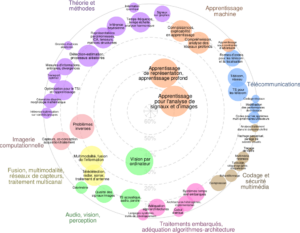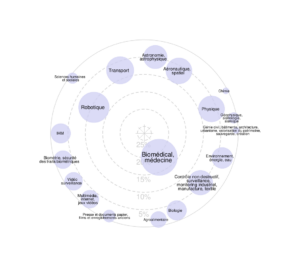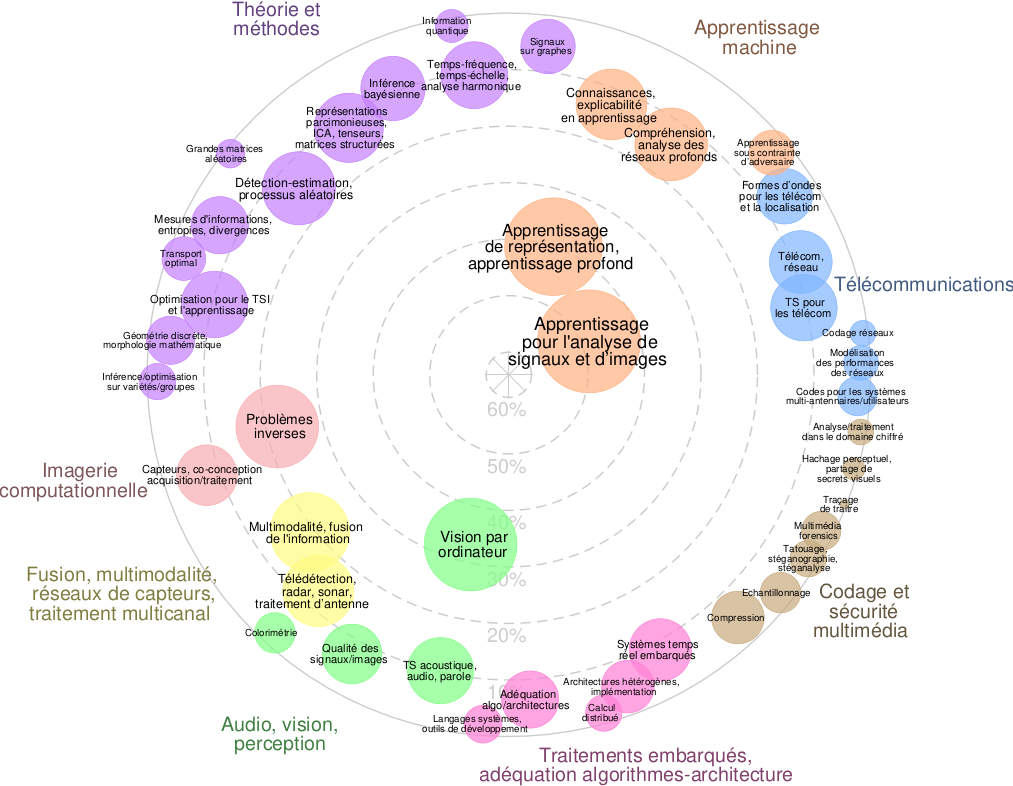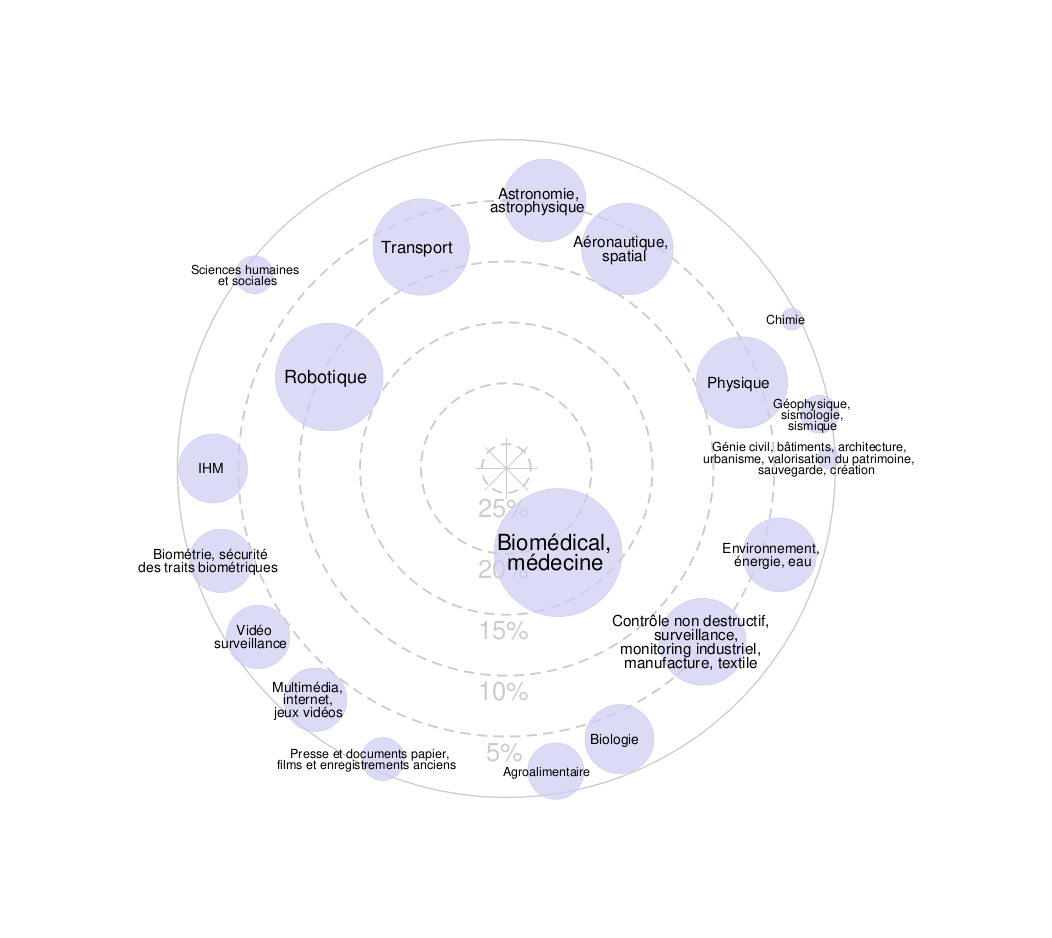Laboratoire : IRISA, équipe Granit (https://www-granit.irisa.fr/)
Encadrements et contacts :
- Matthieu Gautier : matthieu.gautier@irisa.fr
- Baptiste Vrigneau : baptiste.vrigneau@irisa.fr
- Olivier Berder : olivier.berder@irisa.fr
Lieu : Lannion
Context
More than two decades after the first appearances of the concept of an Internet-of-Things (IoT) [1] we have reached a point where wireless connected sensors and actors are omnipresent in our lives and are key building blocks for our digital society. The backbones of this IoT technology are either short-range wireless links (Bluetooth, Zigbee, …) or long-range low-power-wide area networks (LPWANs) that are tailored to the specific low-cost and ultra-low-power requirements of IoT devices. Unfortunately, especially those long-range LPWAN technologies either already struggle with the large number of deployed IoT devices or will certainly struggle in the near future as the number of connected IoT devices continues to exponentially grow. The emerging communication bottleneck causes deployed networks to choke, it prevents further scaling and deployment of IoT technologies, and even impacts the environment as inefficient communication requires more frequent replacements of poisonous batteries.
To cope with the congestion of the networks, LPWAN transmission parameters can be optimized, e.g. using artificial intelligence algorithms, but the performance estimation made during simulations is often higher than what it is in reality. After extensive studies on the LoRa physical layer [1], we propose in [2] a new LoRa network simulator, J-LoRaNeS. Based on the Julia programming language, it allows fast prototyping and is therefore suited to the study of different adaptive LoRa mechanisms.
This PhD thesis subject is complementary to the Swiss-French research project Massive-IoT between Ecole Polytechnique Fédérale de Lausanne (EPFL), University of Rennes, and University of South Brittany. Massive-IoT aims to study the scalability of LoRa and other emerging LPWAN proposals, as Quasi-Cyclic Short Packets (QCSP), paying a particular attention to Cloud Radio Access Networks (Cloud-RAN) multi-user detection leveraging multiple base stations cooperation [3].
General objectives and expected results
This PhD aims at verifying the scalability of LoRa parameters adaption mechanisms based on reinforcement learning, especially multi-arm bandits (MAB), in case of huge number of nodes and several base stations. In the context of LoRa, an arm corresponds to a set of transmission parameters (e.g. Spreading factor (SF), transmit power) used by End Devices (EDs). However, for the 868 MHz band in Europe, the ETSI regulations impose a limitation on the duty cycle (DC) of 1% or 10% depending on the selected frequency which drastically reduces the feedback or cooperation possibilities. New mechanisms have therefore to be designed to take profit from MAB algorithms while respecting DC limitations.
- The first part of the pdd will be dedicated to J-LoRaNeS simulations with increasing number of devices, considering the Adaptive Data Rate (ADR) mechanism of LoRaWAN. The trade-off between the number of both nodes and base stations with respect to QoS metrics (e.g. Packet Delivery ratio) and energy consumption will be explored. These results will be compared to those of ideal (without DC limitation for feedback) and constrained MAB algorithms. New mechanisms such as grouped feedback will also have to be explored to enhance MAB benefits while respecting duty cycle regulation.
- In a second phase, cooperation possibilities between base stations will be investigated. To be properly compared to local decisions (one base station at once), cooperation mechanisms will also have to deal with DC limitations. The benefit of the cloud-based decision will have to be balanced with the energy cost induced by the cooperation, and to respect DC constraints, some base stations will be eventually preferred.
- A last part of this PhD Thesis will be devoted to experiments leveraging the Software Defined Radio approach [4], allowing i) to refine the channel and interference model used by J-LoRaNeS and ii) to validate experimentally the Cloud-RAN approach for LoRa receivers, whether it leverages MAB algorithms or not.
Candidate profile
The candidate should have skills in mathematics, machine learning, signal processing and digital communications. He should be autonomous for the experimental part and have capacities for teamwork and easy integration.
References
[1] J. Courjault, B. Vrigneau, O. Berder, and M. R. Bhatnagar, “A Computable Form for LoRa Performance Estimation: Application to Ricean and Nakagami Fading,” IEEE Access, vol. 9, pp. 81 601 – 81 611, 2021.
[2] J. Courjault, B. Vrigneau, O. Berder, Y. Legoff, and C. Guichaoua, “Catching the LoRa ADR Bandit with a New Sheriff: J-LoRaNeS,” in International ACM Conference on Modelling, Analysis and Simulation of Wireless and Mobile Systems (MSWiM), Montreal (Canada), Oct. 2023, pp. 75–82.
[3] J. Tapparel and A. Burg, “Increasing lora sensitivity and reliability with an iot cloud RAN,” in 2023 57th Asilomar Conference on Signals, Systems, and Computers, 2023.
[4] L. Volpin, B. Le Gal, and G. Ferre, “Efficient LoRa-like Transmitter Stacks for SDR Applications,” in IEEE International Conference on Electronics, Circuits and Systems (ICECS), 2022.





